|
MAKING LIVES :
Service by Sai Alumni
Some time ago, we published an article by
Gene Massey about a seva camp
run by our old students. In this article, I would like to
briefly describe a different kind of seva,
once again done by our old students. This seva
is different because it is not a one-day affair like most
service camps are; rather, it is a continuing and on-going
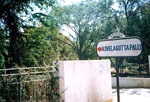 affair.
One of these days, we hope to have the leader of the group
in our studio and interview him for Radio Sai; in the meanwhile,
I could perhaps give a short and broad-brush overview of the
wonderful work being done by these old students of Swami.
Before I get on to the description, may be I ought to mention
that the leader of this team, after graduation some years
ago, decided not to seek a job as that would separate him
from his mother, who though a working-lady needed help due
to a physical handicap. Having decided to stay back to help
his mother, this boy then started exploring possibilities
to do some additional seva during
his spare time, and thus were born the projects that I shall
now briefly describe. affair.
One of these days, we hope to have the leader of the group
in our studio and interview him for Radio Sai; in the meanwhile,
I could perhaps give a short and broad-brush overview of the
wonderful work being done by these old students of Swami.
Before I get on to the description, may be I ought to mention
that the leader of this team, after graduation some years
ago, decided not to seek a job as that would separate him
from his mother, who though a working-lady needed help due
to a physical handicap. Having decided to stay back to help
his mother, this boy then started exploring possibilities
to do some additional seva during
his spare time, and thus were born the projects that I shall
now briefly describe.
The seva activity
was launched on 1st January, 2003, and the service group decided
to focus on a small village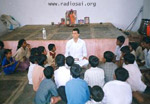 named Kovalaguttapalli. If you walk from the Planetarium towards
the Sai Geetha shed, you will see a road turning to the left.
That road leads to this village, which is on the bank of the
Chitavathi river. There are about 150 families in the village
and the main occupations are farming, milk vending, and labour
service [as coolies].
named Kovalaguttapalli. If you walk from the Planetarium towards
the Sai Geetha shed, you will see a road turning to the left.
That road leads to this village, which is on the bank of the
Chitavathi river. There are about 150 families in the village
and the main occupations are farming, milk vending, and labour
service [as coolies].
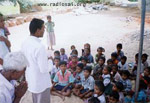 The
service group set itself three objects which it defines as
follows: The
service group set itself three objects which it defines as
follows:
· To understand the socio-economic and cultural aspects
of village life, and to explore suitable means of improving
the welfare and quality of life of the villagers.
· To focus the project so that they
target self-sufficiency in food grains, drinking water, health,
education, and economic sustenance. 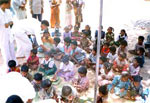
· To render quality
work, even while putting into practice the teachings of Swami.
Wanting to do good is one thing and doing
it the right way is entirely another. Often, service projects
boomerang because of a wrong approach. Not many realise that
though villagers are in general quite poor, they have their
own sense of dignity. Understanding this, our old boys made
a modest and fairly tactful entry. To start with, they just
started paying periodic visits to the village and teaching
the children there songs composed by Swami. Everyone here
 loves
Swami, and thus the children were quite eager to learn Swami’s
songs. The parents too approved heartily of this assistance.
The ice had been broken. loves
Swami, and thus the children were quite eager to learn Swami’s
songs. The parents too approved heartily of this assistance.
The ice had been broken.
Next step was to tell the children something
more, about personal cleanliness, keeping the surroundings
neat, prayer, respecting elders, and studying hard. By the
way, I should mention that almost all the kids in the neighbouring
areas attend Easwaramma School established by Swami many years
ago. Once again, all this instruction went very well with
the village elders; I mean who would complain if someone came
along and taught kids how to be clean, study hard and be respectful
to parents? An added attraction was that from time to time,
the children were also given food. So, round two also was
a success.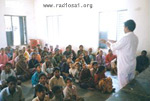
Having gained the confidence of the villagers
and established their seriousness of purpose, it was now relatively
easy for the old boys to start talking to the elders. It started
with regular Bhajans, and soon, after the Bhajan session was
over, the students started talking about Swami’s teachings.
What kind of teachings? Did they give scholarly lectures on
Advaitam and stuff like that?
Not at all! Being Swami’s students, they know very well
how to focus on the relevant, as Swami often had advised them
to, when they were students. Thus, their talks were about
how  parents
must save for the welfare of their family. parents
must save for the welfare of their family.
It is no use giving mere talks about saving
money. Something concrete had to be done and a clear road
map had to be presented. Thus was born the SARD
or SAVE A RUPEE A DAY scheme. Four Self-help
Groups were formed, each with about 12 women members. Each
group nominated two group coordinators, whose job it was to
collect money at the end of every week, and deposit the same
in a savings account in the local branch of the Vysya Bank.
While the villagers were encouraged to do the money collection,
all the required banking assistance was provided by the old
boys, including in relation to making deposits and withdrawals.
By the end of 30 weeks, the total savings stood at Rs. 30,000/-
an impressive sum one must say. 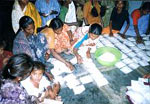
It is not the women alone who received attention
and assistance. The men engaged in farming were introduced
to a cost-effective method of compost generation. To start
with, the farmers were encouraged to regularly collect all
easily bio-degradable matter found in the neighbourhood such
as dry leaves, twigs, etc. All this was then dumped into special
puts dug for the purpose of generating compost. Into these
pits were now introduced earthworms of a special type, which
were then allowed to multiply. At the end of about 40 days
or so, the bio-degradable matter had been transformed by the
earthworms into a rich, natural fertilizer. Not only 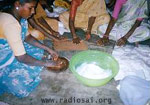 had
expenditure on chemical fertilizers been cut, but, more important,
a better and more eco-friendly fertilizer had been produced
instead. And the yield has gone up too. had
expenditure on chemical fertilizers been cut, but, more important,
a better and more eco-friendly fertilizer had been produced
instead. And the yield has gone up too.
Swami often quotes a Chinese proverb that
says that it is better to teach a man how to fish than to
feed him fish. In this spirit, the students now began to initiate
new programs that would augment the family income. The first
of these was to train the villagers to make cotton wicks.
Now wicks are used regularly in Pujas at homes, and there
is a good demand for cotton wicks. The students taught one
and all to make the wicks, gave the villagers cotton and packaging
material, and finally took the responsibility for the marketing.
Sold under the brand name Deepam Cotton Wicks,
the wicks are on sale in the shopping centre in Prashanti
Nilayam, and believe it or not, the sale is around Rs. 10,000/-
a month. Not bad, I would say. By the way, the money is not
used up but saved in a bank so that it can grow. 
The villagers are now quite enthusiastic
and participate actively in all programs initiated by the
old students, having thoroughly understood that whatever is
being done is entirely for their own good. Thus, every alternate
week, a day is set apart for village cleaning. It starts with
the children going round doing nagarsankeetan,
after which comes the cleaning in which all participate. And
when the cleaning programme is over, there is aarathi.
 There
is always room for more, and the old boys are now exploring
the possibility of systematically cultivating a leguminous
plant, that is know to grow wildly in the region. The attractive
point about this plant is that grows easily in arid regions,
and requires very little water. What is important is that
the seed of the plant yields oil that can be used as fuel.
And the oil cake that remains after the crushing for oil extraction
is a very good fertilizer. Project studies are now under way. There
is always room for more, and the old boys are now exploring
the possibility of systematically cultivating a leguminous
plant, that is know to grow wildly in the region. The attractive
point about this plant is that grows easily in arid regions,
and requires very little water. What is important is that
the seed of the plant yields oil that can be used as fuel.
And the oil cake that remains after the crushing for oil extraction
is a very good fertilizer. Project studies are now under way.
This shows how methods of man-management
and cost-effective production etc., studied in the Business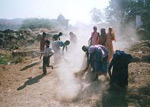 School can come in handy even in seemingly mundane village
affairs! Let me end this heart-warming story with something
that is really wonderful. Sometime ago, a farmer lost his
cow suddenly. It was apparently healthy all along but mysteriously
died and quite suddenly too. The veterinary doctor who was
consulted when the cow became very sick was suspicious that
it was all due to something that the cow had eaten. So, with
the permission of the farmer, he did a post-mortem. What he
saw shocked not only him but also all the curious villagers
who had gathered around. The cow of the stomach was full of
plastic bags that had been discarded as garbage by all and
sundry. Promptly, our boys told the villagers, “It is
time to
School can come in handy even in seemingly mundane village
affairs! Let me end this heart-warming story with something
that is really wonderful. Sometime ago, a farmer lost his
cow suddenly. It was apparently healthy all along but mysteriously
died and quite suddenly too. The veterinary doctor who was
consulted when the cow became very sick was suspicious that
it was all due to something that the cow had eaten. So, with
the permission of the farmer, he did a post-mortem. What he
saw shocked not only him but also all the curious villagers
who had gathered around. The cow of the stomach was full of
plastic bags that had been discarded as garbage by all and
sundry. Promptly, our boys told the villagers, “It is
time to 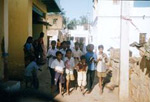 get
rid of the plastic bags, a major curse of modern times. We
will teach you to make paper bags. This will save us from
the horror of plastic bags, and incidentally also fetch some
income.” get
rid of the plastic bags, a major curse of modern times. We
will teach you to make paper bags. This will save us from
the horror of plastic bags, and incidentally also fetch some
income.”
And thus has come into existence another
cottage industry. Our boys help in the collection of old newspapers,
and the villagers are busy making paper bags. What about marketing?
Will our boys leave the villagers in the lurch? No way, and
using their contacts, they have now got the Boys’ Hostel
to abandon plastic bags and use paper bags exclusively in
their Co-operative Stores. Thus, it is quite common to see
our hostel boys move around with paper bags rather than plastic
bags. 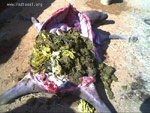
I do hope this new trend would spread like
wild fire, because the plastic bag menace is assuming alarming
proportions. You do not have to take my word for it. Just
take a walk to the Chitravathi river and you would see tons
and tons of plastic bags getting dumped there. Frankly, I
do not have the heart to see this terrible sight any more.
I mean this is the same river bed that was once the scene
of extra-ordinary Divine Leelas
of which you have had a glimpse in this issue. Is this to
be the fate of the Divine Playground? Is this the way we should
 show
respect to One whom we do not miss an opportunity to hail
as the Lord? show
respect to One whom we do not miss an opportunity to hail
as the Lord?
You know what Jesus once said? He said, “Why
call ye Me Lord, Lord, when thou does not follow what I say?”
Our Lord says, revere the Earth. Is this the way to show reverence
to Mother Earth? May be I should end with a Chinese proverb
that says: If man ill-treats the Earth, the Earth in turn
would punish him!”
I would very much like to hear your comments on what I have
written. As usual, we can be reached at: h2h@radiosai.org
G.VENKATARAMAN

|